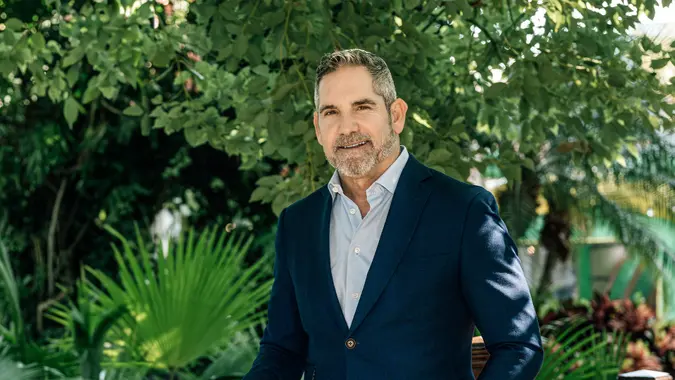Financial Planning Experts: Here’s How Much You Have Overpaid Companies in Your Life

Commitment to Our Readers
GOBankingRates' editorial team is committed to bringing you unbiased reviews and information. We use data-driven methodologies to evaluate financial products and services - our reviews and ratings are not influenced by advertisers. You can read more about our editorial guidelines and our products and services review methodology.

20 Years
Helping You Live Richer

Reviewed
by Experts

Trusted by
Millions of Readers
The prospect of overpaying for goods and services seems like an inevitable part of modern life — like death and taxes. From the cup of coffee you grab at the drive-through to the insurance premiums you pay every month, odds are that you’ve shelled out far more than you’ve needed to over the years.
But where exactly does that money go? It may feel like it zips into a void, but there are clear places where you’re likely to overspend. GOBankingRates talked with Spencer T. Hakimian, founder of Tolou Capital Management, L.P., and Brent Thurman, owner of Keystone Insurance, to pinpoint some of the areas where you’ve probably spent too much.
Overly Robust Insurance Policies
If there’s one thing Thurman knows, it’s insurance. And he’s seen healthier, younger people pick packages that are far pricier than they need, thinking that expensive equals superior. In reality, many people could do perfectly fine with a simpler and cheaper package.
This phenomenon doesn’t only happen with health insurance. Thurman has noticed that drivers with older cars will sometimes spend big for full coverage.
“It might sound like a good idea, but if the car’s market value is low, why pay more for insurance than the car is actually worth? Often, these choices can add an unnecessary $300 to $500 to annual costs,” he said.
Staying With the Same Insurance Providers
Loyalty may be commendable in many areas of life, but not necessarily when it comes to finding the right insurance provider. Thurman said that people can overspend on insurance by staying with the same provider every year and not investigating better rates from other companies.
“The difference can be substantial. For instance, homeowners’ insurance might cost you $1,500 a year with your latest provider but only $1,000 with another. By not shopping around, you could be overpaying by $200 to $600 every year,” he added.
Bank Fees and Credit Card Charges
You might only be aware that you’re spending money when you’re directly handing your credit card over to the shop clerk. However, sometimes our banking and credit cards end up costing us in ways we don’t notice at first.
“Overdraft fees, which typically amount to around $35 per transaction, can quickly accumulate if an account is frequently overdrawn,” said Hakimian. “Similarly, ATM fees, which range from $2.50 to $5.00 per withdrawal at out-of-network machines, can add up for those who do not have access to their bank’s ATMs.”
He also noted that credit card charges, particularly annual fees, can also be incredibly costly, ranging from $95 to $550 depending on the card. Consumers should look to banks that offer no-fee accounts or reimburse ATM fees. He suggested that you also search for credit cards with no annual fees unless the benefits clearly outweigh the costs.
“By being vigilant and making strategic choices, consumers can minimize these hidden costs and better manage their finances,” he said.
Cable and Internet Services
Even in the age of streaming, consumers are often paying for bundled cable and internet services that include channels and internet speeds they don’t really use. As Hakimian breaks it down, the average monthly cost for cable TV packages ranges from $50 to $150, while internet services can cost between $60 and $100.
“Many consumers are now finding that they can significantly cut costs by switching to streaming services that offer the content they actually watch at a fraction of the price,” he said.
Negotiating with cable and internet providers, or switching to more competitive plans, can help you cut costs. Ultimately, you’ll do well by understanding what you actually need from your plan and advocating for yourself — and your wallet.
“By evaluating their actual usage and needs, consumers can eliminate unnecessary expenses and make more cost-effective choices in their entertainment and internet services,” Hakimian said.
 Written by
Written by  Edited by
Edited by 

























